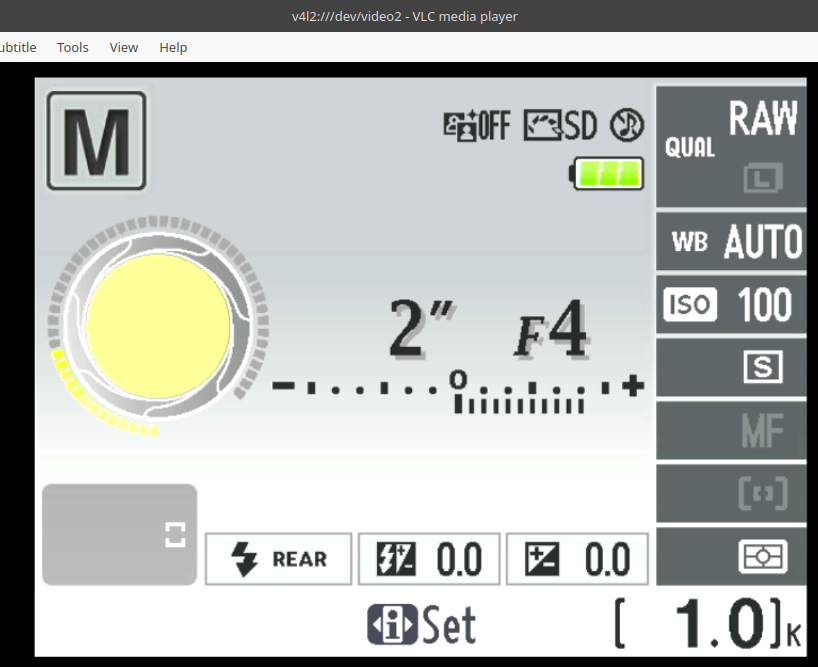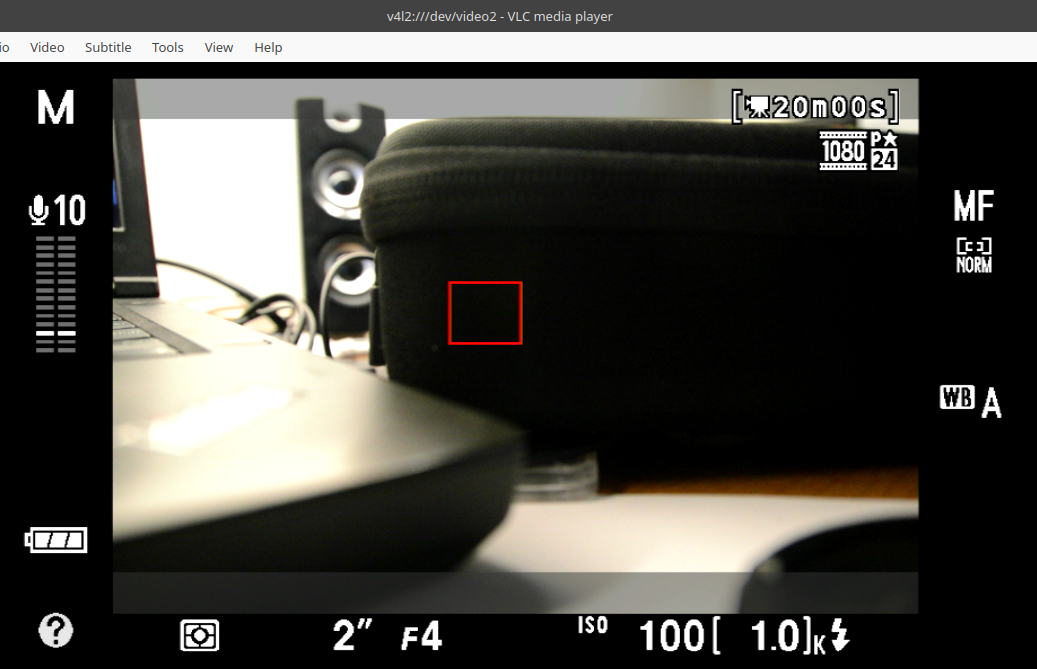Today I decided to test the output of my Nikon D3200 on an external monitor using an HDMI cable (mini to regular).
I had a generic USB capture card laying around (picture attached) I bought online many years ago to use an old GoPro as a webcam. I plugged the card to my computer running Linux (Debian) and the HDMI cable to the camera. After installing v4l-utils (and consequently gstreamer1.0-tools, v4l2loopback, etc), I could see my camera as a /dev/video2 device and mirror its screen to VLC.
Now, I understand the Nikon D3200 isn’t really well supported for computer control. I could use it as a webcam during the lockdown using Ben Chapman’s guide through the UC-E6 USB cable, but I tried to control it using Entangle and couldn’t do much.
My question is: I simply unplugged the camera from the computer/capture card and connected it to my TV. Suddenly, I was limited to a slide show of the image and videos stored on the SD memory card, no screen mirroring or live preview. From what I’ve read, the Nikon D3200 isn’t supposed to support screen mirroring anyway (neither through HDMI nor USB, through gphot or whatever), but I don’t exactly understand why it works with this USB/HDMI capture card setup.
How is a USB/HDMI capture device interpreted differently by the camera compared to a TV? I tried manually setting the output resolution on the camera, but the outcome is the same, regardless of camera configs.
I appreciate your input!
I might ask the same question on https://photo.stackexchange.com to get their perspective on it.
Here are the images:



Edit: I figured out what is happening here. By checking the D3200 Reference Manual, I figured out my TV supports HDMI-CEC. If the “Device control” option is set to “Yes” in the settings, the camera will prioritize the slideshow functionality whenever HDMI-CEC is supported. If HDMI-CEC isn’t supported by the display, then a mirrored image of the camera’s screen will be outputted. To have the same output for both cases, I need to turn off the “Device control” option.
References:
Page 86:
When the camera is attached to an HDMI video device, the camera monitor will remain on and the video device will display the view through the lens as shown at right. If the device supports HDMI-CEC, select Off for the HDMI > Device control option in the setup menu (0 124) before shooting in live view
Page 90:
When the camera is connected to a video device, the device will display the indicators shown at right. The camera monitor does not show the sound level, and the R can not be used to hide or display indicators in the monitor or on the video device. If the device supports HDMI-CEC, select Off for the HDMI > Device control option in the setup menu (0 124) before shooting in live view.
Page 124:
HDMI displays connected via an HDMI cable can be used for live view and movie recording (0 86, 90). During movie recording and playback, HDMI output is adjusted according to the option selected for Movie settings > Frame size/frame rate in the shooting menu (0 90). Note that some devices may not support the selected setting; in this case, select 1080i (interlaced) for HDMI > Output resolution (0 124). Movies may be output at a frame size smaller than that selected for Frame size/frame rate (0 90).
If you’re trying to use the HDMI output as a “what the camera sees” output, you need to look into clean HDMI. In a nutshell, a lot of cameras out there will output something similar to what you see in the EVF and/or display via HDMI. This is useful for reviewing the camera (you can show viewers what you would actually see via the EV and/or display), but it’s not very useful for what you’re trying to do.
Thanks for the reference! Just to be clear, I am no longer interested in live streaming/DSLR as webcam. Nowadays I want to use my computer or a field monitor for tricky focusing situations (macro/astro). Would you know whether a field monitor connected to the camera would output something similar to the USB capture card/computer setup or the TV?
If you’re connecting the field monitor via USB, I would expect very similar behavior.
How is a USB/HDMI capture device interpreted differently by the camera
The camera does not “interpret”. HDMI was intended as a one way street, originally.
a slide show of the image and videos stored on the SD memory card
It is like the playback mode of your camera, just with replacing the camera’s little screen with a large screen. That’s what the HDMI output of most photo cameras is made for.
I understand the Nikon D3200 isn’t really well supported for computer control.
Your search term is
nikon d3200 “tethered shooting”
A quick glance showed several possibilities.
It is like the playback mode of your camera, just with replacing the camera’s little screen with a large screen. That’s what the HDMI output of most photo cameras is made for.
I understand that this is the original purpose of the HDMI output of this particular camera. But why is it behaving differently when the HDMI output is a USB capture card compared to a TV? That’s what is puzzling me
Your search term is
nikon d3200 “tethered shooting”
I understand that tethered shooting is a thing (kind of) for this camera. But from what I find online, full control isn’t exactly possible with the Nikon D3200. See, for instance, this link or this.
Many years ago, using
gphotandvideo 4 linux, I could remotely activate the shutter and download images (but low res only), live stream through USB, but I couldn’t remotely control aperture, ISO, or focus. So it seems to me that it isn’t possible to fully control this particular model through tethered shooting.Anyway, my main point is: I am still confused why the output would be different using a USB/HDMI capture card versus a TV; even though the camera should in principle send the same information to both devices.
my main point is: I am still confused
even though the camera should in principle send the same information
I understand it this way: you get confused because you try to decide what the cam should do before you know what the cam should do :-)
As an explanation, I can only guess that your capture device/software has sent some command to the cam, and got that result.
full control isn’t exactly possible with the Nikon D3200.
So, first find out what is possible with this cam (and what you actually want to use out of these possibilities). Then decide which software to use. They are very different.
I understand it this way: you get confused because you try to decide what the cam should do before you know what the cam should do :-)
As an explanation, I can only guess that your capture device/software has sent some command to the cam, and got that result.
You are absolutely correct. My TV supports HDMI-CEC, so if “Device control” is set to “On” under the “HDMI” tab, the camera will display a slideshow whenever connected to a HDMI-CEC device. If “Device control” is set to “Off” or if the screen doesn’t support CEC, then a mirrored image of the camera’s screen will be transmitted.
You can check my main post edit for details.
I really appreciate your help!
